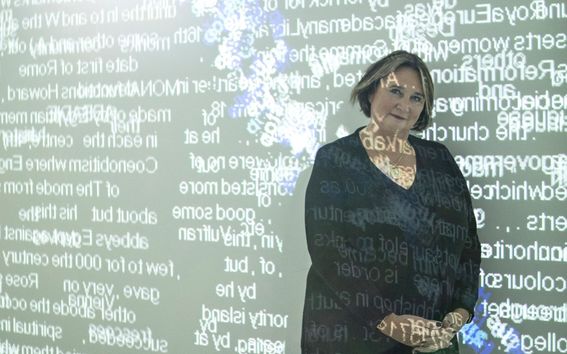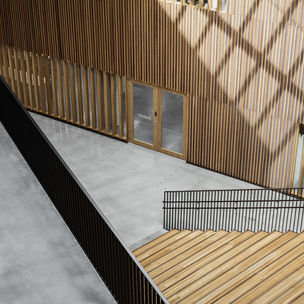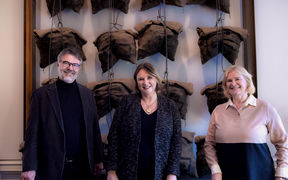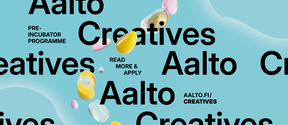Partnership: Art and creativity are drivers of society

Everything starts with creativity. That is a fundamental belief of Rafaela Seppälä, a prominent art connoisseur and collector who sees art as one of the great drivers of progress.
‘All good ideas spring from new perspectives and from recombining things, and art is a remarkably efficient way to open oneself up to that,’ says Seppälä.
Seppälä has donated €500,000 to Aalto University, earmarking it for art and design. She wants the donation to support creative skills at Aalto, which are highly valued internationally.
‘Finland has always had a high level of creative talent and design. The identity of the newly independent country was created very much through design, starting from a clean slate and drawing on nature. The result was a lucid and authentic style on which today’s generations are boldly building their own unique skills. I hope that wonderful new artists will emerge from Aalto!’
Seppälä is a firm believer in the university’s concept of putting students of art and design, technology and economics into contact with each other right from the get-go.
‘We all have something to learn from each other. Just as a designer needs economic acumen, so will an engineer benefit from creative and user-oriented thinking when solving technical problems. That’s the kind of interaction and learning from each other we should strive for in all of life. My own motto is: learn something new every day.’
International cooperation opens eyes and doors
Seppälä lived abroad for many years, and that’s where she got her education. She grew up in an ambassadorial family which spoke four languages and placed great emphasis on Finnish culture and design. Seppälä studied political and social science in Paris and completed her master’s degree at Columbia University in New York.
‘As a foreign student at Columbia, I learned things I would never have learned back home. Similarly, international students bring new perspectives on local culture, and it is important to bring them to Finland. Whenever there’s been international dialogue, Finland has always benefited.’
Seppälä collects fine art, but she’s also passionate about Finnish design. The extensive collection in her Helsinki home includes several lamps designed by Paavo Tynell.
‘I love Tynell’s lamps. He was an incredible artist who created a remarkable body of work. He also understood the importance of marketing and took New York by storm with his works.’
Seppälä has great respect for the traditions of Finnish design and takes her hat off to its bold innovators.
‘Someone like Armia Ratia had a strong vision and the sheer guts to launch the Marimekko story. Similarly, Pertti Palmroth brought colourful nappa leather boots to Paris at a time when no one there had seen anything like them. That’s the kind of audacity and daring we must maintain in the future as well.’
An open mind and the capacity for creative thinking are essential for finding new ways of doing things. As an example, Seppälä mentions the development of textile fibre recycling at Aalto University.
‘It’s a process that has huge significance for the economy, for the environment and for the community, and it has also attracted attention internationally.’
Creative thinking and design also play a big role in the development of new durable packaging materials.
‘When I was a little girl, everything you bought in a shop was wrapped in a piece of brown paper. Today, every steak comes wrapped in a layer of plastic. Fortunately, new solutions are now being sought.’
Putting people at the heart of design
Rafaela Seppälä is visibly excited about the trip she made last summer to Paimio Sanatorium. The architecture and design of the building, completed in 1933 and situated in the middle of a pine forest, left an indelible impression on her.
‘Alvar and Aino Aalto had an unshakeable faith in the site of the sanatorium. It’s extraordinary how natural light is used inside the building. Every little thing in the interior has been considered, down to the smallest detail. Even the sinks in the patient rooms were designed to prevent the sound of running water from waking the patient in the next bed.’
This is something Seppälä would like today’s designers to take to heart. ‘Finnish design sometimes has a weakness in that the products aren’t genuinely suitable for actual use. Human-centred design ensures that a chair is comfortable to sit in, and that approach doesn’t detract from creativity.’
Seppälä sees the new professorships of practice at Aalto University as an excellent opportunity for interaction between the university and the business sector.
‘It is extremely important that science and research exist in a living connection with the greater world and society around the university. It gives students opportunities to learn about the needs and problems of end-users.’
Seppälä’s message to students in the arts and creative fields is this: ‘Be bold, even crazy – just seize the opportunity! Everyone has their own perspective and vision, and if those are combined in unexpected ways and in interaction with other people, great things will happen.’
Text: Marjukka Puolakka
Photo: Outi Törmälä
This article has been published in the Aalto University Magazine issue 31 (issuu.com), October 2022.
For more information:
Raila Tapio
Donor Engagement, Arts and Design
raila.tapio@aalto.fi
+358 50 475 9978

School of Arts, Design and Architecture
School of Arts, Design and Architecture
Join us in accelerating the transition towards a sustainable future.
Rafaela Seppälä donates 500 000 euros to Aalto University's area of art and design
The substantial donation is part of the government matching funding campaign that will run until the end of June 2022.

Read more news

Two Unite! Seed Fund projects involving Aalto secure top EU funding
Two prestigious EU grants have been awarded to projects that were initially supported with Unite! Seed Funding. Both projects involve Aalto.
Major funding powers development of next-generation machine technology aimed at productivity leap in export sectors
The BEST research project is developing new types of sealing, bearing, and damping technology.
Unite! Seed Fund 2026: Call opens on 20 January 2026
Gain an early overview of the Unite! Seed Fund Call of Spring 2026. The call includes three funding lines: Student Activities, Teaching and Learning, and Research and PhD.






